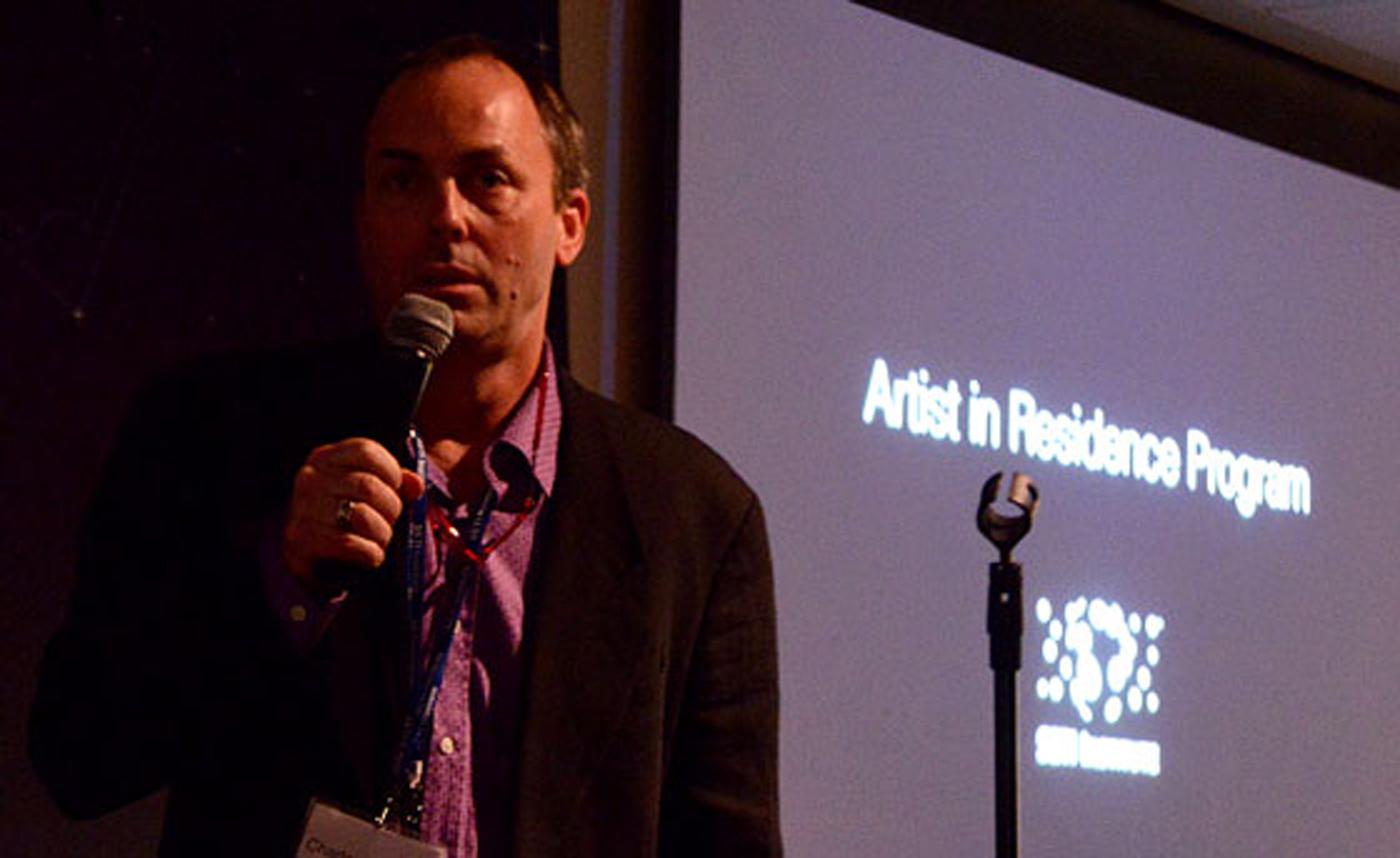The SETI Institute Artists-in-Residence present their work to Institute guests at a interdisciplinary gala.

It was a soiree in which art met science. On the evening of January 22, the SETI Institute’s artist-in-residence, Charles Lindsay, presented some of his highly imaginative and provocative work to two hundred guests, and explained the role of artistic expression as an inspiration for, and reflection of, Institute research.
This cross-disciplinary event showed how far ideas about art and science have changed in the last half century. In a famous 1959 lecture, British novelist and scientist C. P. Snow told a Cambridge audience that western society was hobbled by a split into two cultures: science and the humanities. Never the twain would meet, was Snow’s ostensible thesis.
But Lindsay and other artists and scientists who spoke at the artist-in-residence event showed that the twain have not only met, but embraced. From the study of whale vocalizations, to the bountiful planet harvest of the Kepler spacecraft – even Heisenberg’s uncertainty principle – all were grist for art projects that tried to experientially connect the public with the research. The creativity of art and the curiosity of science are both essential parts of human nature, and both were on plentiful display during the two-hour event.

CEO David Black, and new SETI Institute artists-in-residence Nina Waisman and Martin Wilner
Lindsay, who was named Institute Artist-in-Residence four years ago, introduced two new members of this program: Nina Waisman, a dancer and performance artist from Los Angeles, and Martin Wilner, a psychiatrist and graphic artist living in New York. With this expansion of the program, the synergy of art and science is ensured a vigorous future at the SETI Institute.





